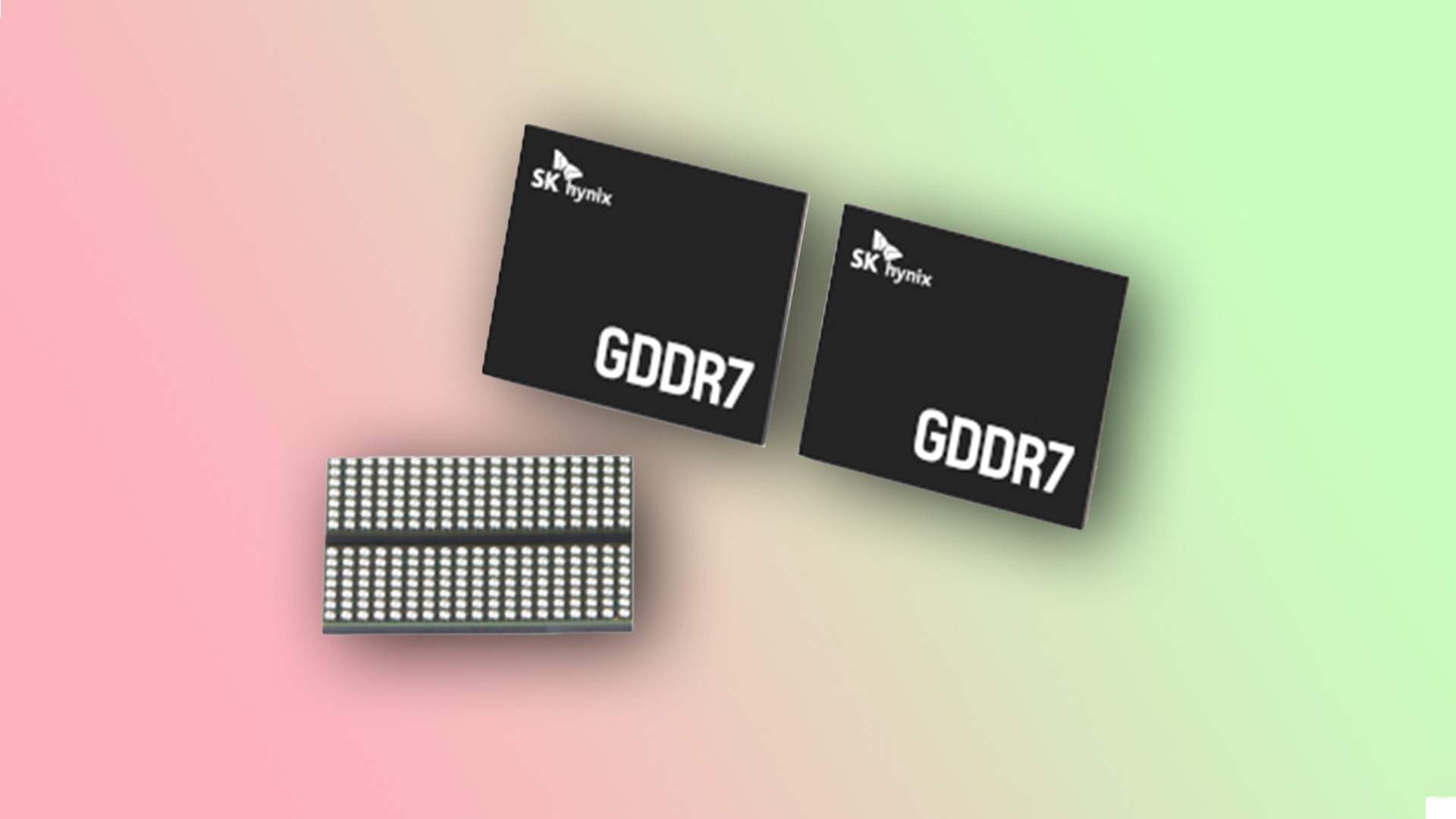SK hynix confirms 3GB GDDR7 memory modules are in the works — higher capacity could pave the way for fabled RTX 50 Series Super cards with 24GB VRAM
While aimed at AI accelerators, new 3GB GDDR7 chips could help deliver 18GB and 24GB VRAM GPUs more efficiently

Memory chip manufacturing giant SK hynix has confirmed that it’s preparing to roll out higher-capacity GDDR7 memory modules later this year. In its latest earnings call, the company said that it will be increasing the maximum capacity of its GDDR7 from 16GB (2GB per module) to 24GB (3GB per module). While the comment was made in reference to AI GPUs, it is hard not to dwell on the potential for these new memory chips in future consumer-grade GPUs.
Having more VRAM doesn’t necessarily mean better performance; however, in recent years, it has become clear that 8GB or even 12GB is just not enough for many modern games, especially at higher resolutions or when enabling ray tracing. Additionally, generative AI tools have become more common in creative and productivity workflows and benefit heavily from additional memory.
From a practical standpoint, this move could also help bring higher VRAM capacity to slightly more affordable GPUs, not just the flagship models. Using 3GB modules would potentially make it easier to build a 24GB card with just eight memory modules instead of 12, which would essentially help in reducing power, thermals, and cost.
SK hynix’s plans to introduce higher capacity GDDR7 memory modules coincide with recent rumors surrounding Nvidia’s next consumer GPU lineup. According to a recent report, the potential RTX 50 Super series could arrive with refreshed models featuring 24GB and 18GB of video memory. Meaning that these 3GB GDDR7 modules would be perfect if Nvidia wants to avoid stacking extra modules at the back of the PCB. Notably, Nvidia began using SK hynix GDDR7 chips only recently for its current-generation of RTX 50-series Blackwell graphics cards.
Of course, none of this is official confirmation. Nvidia hasn’t announced a Super refresh yet, and even if it does, there’s no guarantee whether it’ll make use of higher VRAM modules on every single SKU. But when your memory supplier starts talking about higher-capacity modules, it’s a strong hint that something bigger is on the table.
Beyond GDDR7, SK hynix says that it is pushing across its memory portfolio in response to the accelerating AI demands. It is preparing next-generation LPDDR memory modules for servers to enable energy-efficient AI inference in data center environments. It’s also continuing to lead in High Bandwidth Memory (HBM), with high-volume production of 12-layer HBM3E alongside plans to introduce HBM4 later this year. Meanwhile, the company is also on track to release enterprise-grade 321-layer NAND SSDs in the second half of 2025, targeting high-capacity storage solutions for AI and hyperscale workloads.
Follow Tom's Hardware on Google News to get our up-to-date news, analysis, and reviews in your feeds. Make sure to click the Follow button.
Get Tom's Hardware's best news and in-depth reviews, straight to your inbox.

Kunal Khullar is a contributing writer at Tom’s Hardware. He is a long time technology journalist and reviewer specializing in PC components and peripherals, and welcomes any and every question around building a PC.
-
Rakanyshu Reply
No you don't get it we are supposed to buy a new GPU every 6 months, and if you are very poor it can be a RTX XX70 but ideally you want to be paying 3k dollars for a RTX XX90 to play roblox at 4k, and use stable diffusion for some dumb images to post on social media.abufrejoval said:So now the only thing I need is a way to swap them into my existing GPUs... -
usertests Reply
https://videocardz.com/newz/first-generation-of-gddr7-graphics-cards-sticking-to-16gbit-2gb-modules-3gb-on-roadmapsS58_is_the_goat said:Just give us the 4gb chips instead
Judging by the Micron roadmap, maybe we won't see 4GB modules before 2027-2028.
The standard defines 6GB and 8GB but it's up to the memory manufacturers to make them or skip them.
I think we'll see a lot of 3GB for the upcoming generation, leading to "weird" configurations like 18 GB on 192-bit, starting with the 5070 Super. MLID has just leaked 36 GB, 18 GB, 15 GB (160-bit), and 12 GB for RDNA5. Intel can also use these modules... if they stay in the business. -
Notton I am encountering more and more games that don't work well with only 12GB VRAM at 1440p, despite the GPU being just fine.Reply
The result is great average, fps, but extremely poor 1% when it has to load more textures into VRAM.
So 16GB is really the minimum, while the aim should be 18GB or more. -
usertests Reply
What about a 15 GB card? Still 25% more than 12 GB, but 16 GB is far more ubiquitous and should be a long-term target.Notton said:So 16GB is really the minimum, while the aim should be 18GB or more. -
LuxZg It's simple really, now you can have upgraded capacity:Reply
- 8GB => 12GB
- 16GB => 24GB
It's good overall because it offers flexibility.
Now if they could mix the two, you'd be able to have eg 5060 Ti with 8/12/16/20/24 (if they could have one PCB side with 2GB, and other with 3GB chips ;-D ) -
Notton Reply
15gb ought to be fine for 1080p, but even16GB is not enough at 1440p these days.usertests said:What about a 15 GB card? Still 25% more than 12 GB, but 16 GB is far more ubiquitous and should be a long-term target.
IMO, you probably want more like 24GB for 1440p if accounting for 5yr life span.